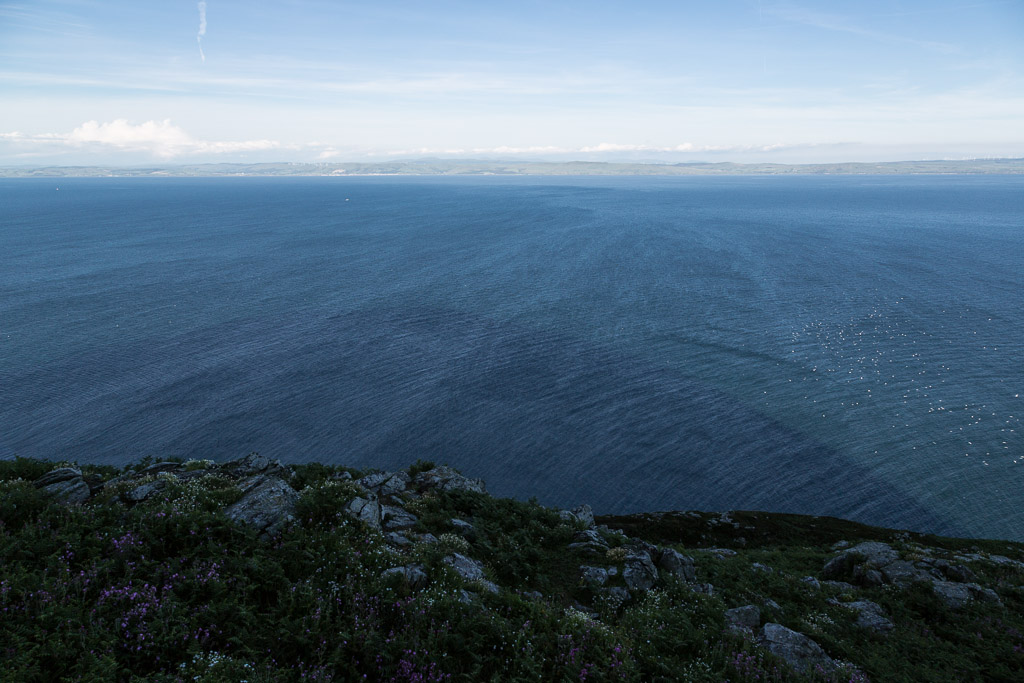It was 9:30pm when we returned to the spit by the lighthouse and so we wasted no time in getting a fire going.
....wonderful embers for our baked potatoes which we garnished with butter, cheese and salt.
At this point I produced a bottle of single cask 18y old Glengoyne. My friend Ming was staying with us on a visit from Taiwan and he kindly bought me a bottle of this wonderful elixir. This whisky truly has an extra dimension when compared with lesser malts and it is all the better enjoyed in company.
The glow in our bellies was matched by the glow of the hidden sunset.
The lighthouse lantern started flashing as...
...Phil Tony and I chatted long into the summer night. It had been a wonderful day for each of us.
Behind us the rocks glowed in the light of the fire and...
...the sky behind the Arran mountains still glowed even though it was midnight. This is a view of a sunset behind Arran that not many people see.




























































